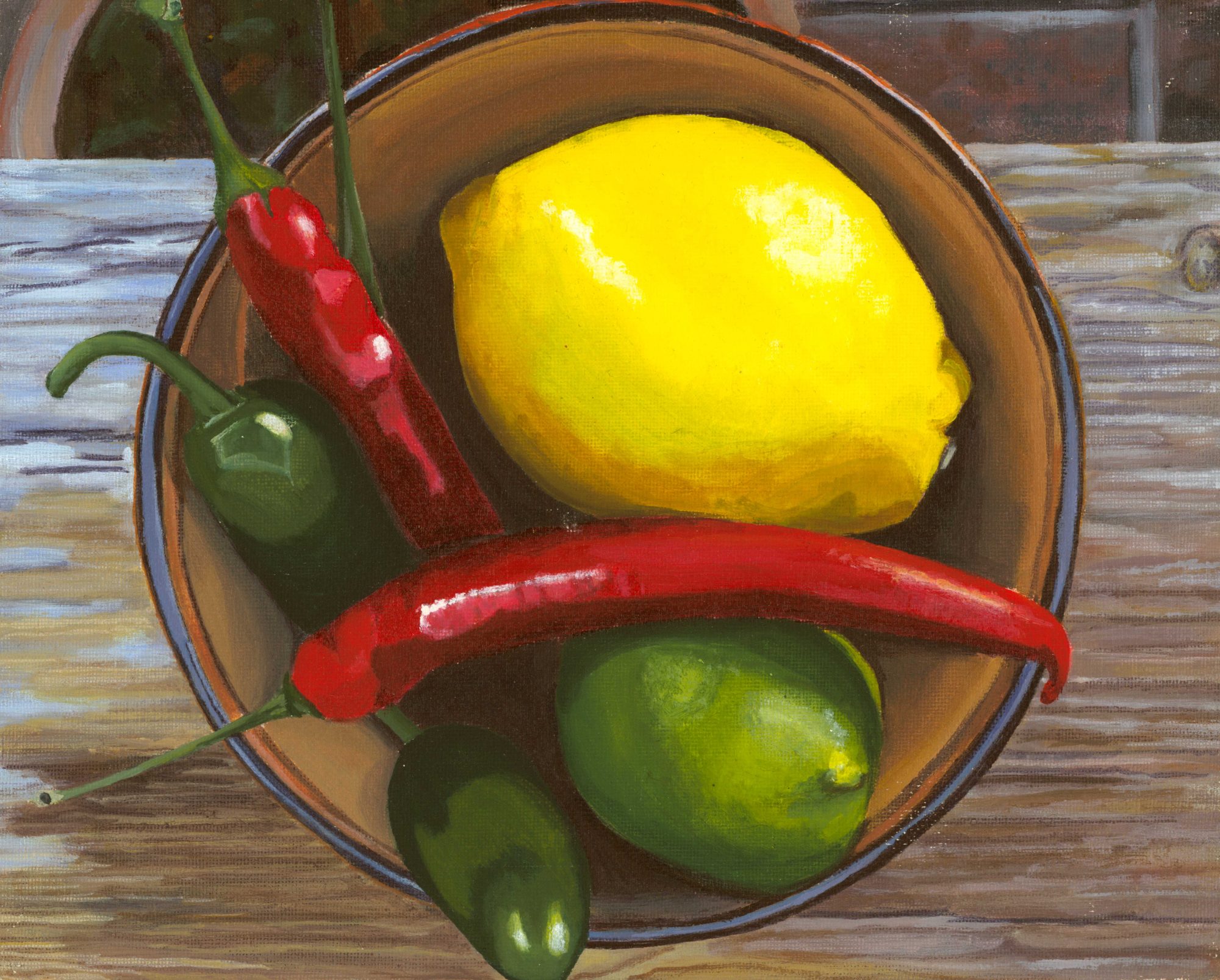Or Andrews, Picasso and me
Although it’s possible to make monotone prints for years, for a whole career – and people do – if I’m anything, I’m a colourist. It wasn’t long before I was trying out ways to add colour to prints.
Most straightforward – duh – is a method known to preschoolers: colouring in. The print (or key) block makes the outlines; then, depending on the paper and ink you’ve used, you can add watercolour, pencils, pastels, markers… you get the idea.
It takes time, and you might feel like you did enough of it when you were six to last a lifetime. It won’t rescue a print that is badly cut or designed. But it is an easy way to add colour accents or highlights where carving another block or stamps would be fiddly and slow; it’s easy to make variations in the prints with different colours, and it does without the tricky business of registration.
So to some extent does reduction printing – a process where you create varied tones or colours on one block by printing, carving away and printing again, so that areas carved remain the colour of the first printing, and everything else is covered by the next layer. This method means – because you are using the same block – that it’s easier to line up one layer of printing with the next (that’s registration, in a nutshell). It does mean that any mistakes you make in the cutting can’t be overprinted to hide them; and that when all the layers are finished, so is the block. This is why it’s also known as a suicide print. It was used a lot by Picasso, although it is unlikely that he or his printer invented it (as is sometimes claimed) as examples from the 30s and 40s have been found.
I’ve done a couple of these, and while this method does make it easier to register, it’s not foolproof, particularly if you are the kind of fool who can absently shove the plate in upside down halfway through the layers.
Spot colour is the next step to full multi-block printing: using chunks of lino cut to the shape of large areas you want coloured and lining them up under or over the key block. Acetate sheets, double-sided tape and a technique called trapping – overlapping overprinted layers to clean up edges – are all useful for this, and I’ve used them for making cards and prints this year.
There are two other methods I haven’t tried yet: chine colle (where thin coloured paper is stuck to areas of the print during the printing process) and full multi-block printing. I’m working on it… in the meantime, over to the experts: http://www.outside-line.uk/printing/
